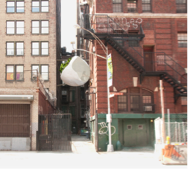[[File:<Team Photo.jpg>]]
Abstract
The purpose of this project is to create an edible railing that will be built on the WetLand barge. The Food on Deck team created a prototype and design for the railing that will be replicated in Philadelphia, Pennsylvania. Team Food on Deck has been brought together through the Humboldt State University class, Engineering 215 - Introduction to Design, taught by Lonny Grafman.
Background

In the summer of 2014, an island-based ecosystem and mobile habitat, also known as, Wetland will be launched on the Delaware River in Philadelphia. Wetland is founded by a New York City based artist named Mary Mattingly. Wetland will promote art, community, sustainable living, and environmental technology. The Wetland barge will provide a short-term home for artists, and a venue for educational events. One of the goals of Wetland is to showcase a model for interdependent living where resources are decentralized. This will be achieved by having a percentage of food being grown locally, having power generated by the sun, and the gathering, purification, and storage of water on site.
Objective and Criteria
The objective of the edible railing design is to create a safe perimeter for the barge that also serves as a food source. The railing will provide a percentage of the caloric intake for the three to five people that will be living on the barge. The railing will be constructed mainly of waste stream materials. Table 3-1 shows the criteria created by Team Food on Deck in collaboration with the WetLand creators. These criteria were weighted to help choose a design that best fit the client’s needs.
Criteria
| Criteria | Importance | Constraints |
|---|---|---|
| Safety | 10 | The railing must be built to Code of Federal Regulation specifications. |
| Durability | 9 | The railing must last a least three months. |
| Produce Production | 9 | The railing must provide at least 25% of the food for three people per day. |
| Ease of Replication | 9 | The design must be simple enough to be replicated by a high school graduate. |
| Cost | 8 | The model of the railing must not cost more than $100 per 8-foot section. |
| Environmental Justice | 7 | Building materials must be from the Humboldt County, CA waste stream. |
| Plant Locality | 6 | Plants must be able to grow in Philadelphia, Pennsylvania. |
| Ease of Maintenance | 6 | The railing must be designed so maintenance will only take 30 minutes a day for three people. |
| Level of Water Conservation | 5 | The railing must only use 10% of the provided desalinated water. |
| Educational Value | 4 | The literature must be accessible to a fourth grader |
| Ascetically Pleasing | 4 | The railing must be a mix of organic and synthetic material |
Description of Final Design
Materials and Our Costs
The following table lists the materials used to build the attachments for the railing. This table shows the materials used for one, eight foot section of railing.
| Image | Description | Cost per Unit | Quantity | Total Cost | Place Bought |
|---|---|---|---|---|---|
| [[File:<Team Photo.jpg>]] | Small Plastic Nutrient Solution Containers | Donated | 9 | Donated | Water Planet [1] |
| [[File:<Team Photo.jpg>]] | Large Plastic Nutrient Solution Containers | Donated | 4 | Donated | Water Planet [2] |
DIY
The following is a series of steps on how to build the attachments for an edible railing.
| Step | Description |
|---|---|
| 1 | Cut the tops off all the plastic nutrient solution containers |
| 2 | … |
Plant Selection
The following table lists the recommended plants to be planted in each container position.
| Container Position | Recommended Plant Species |
|---|---|
| A | … |
| B | … |
Maintenance
Results
The edible railing is successful in providing a safe food source for the people living on the WetLand barge.